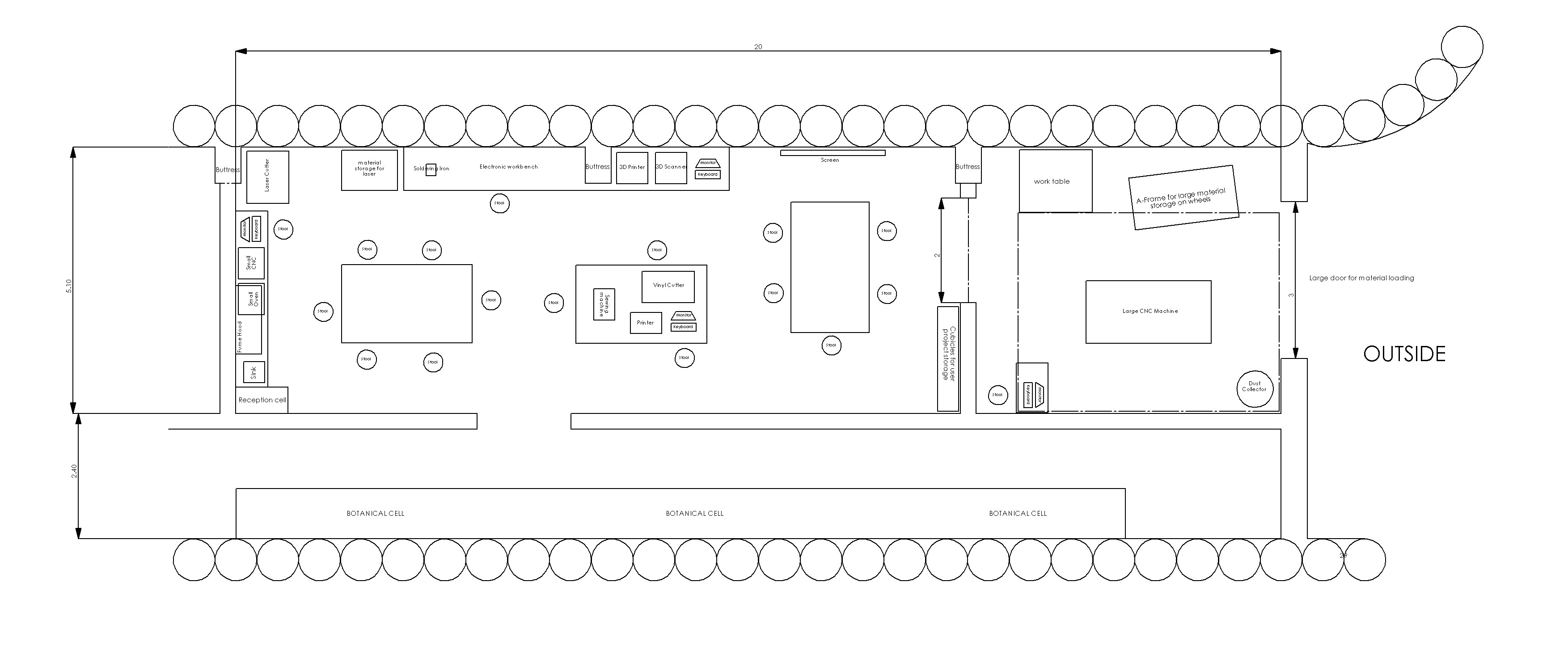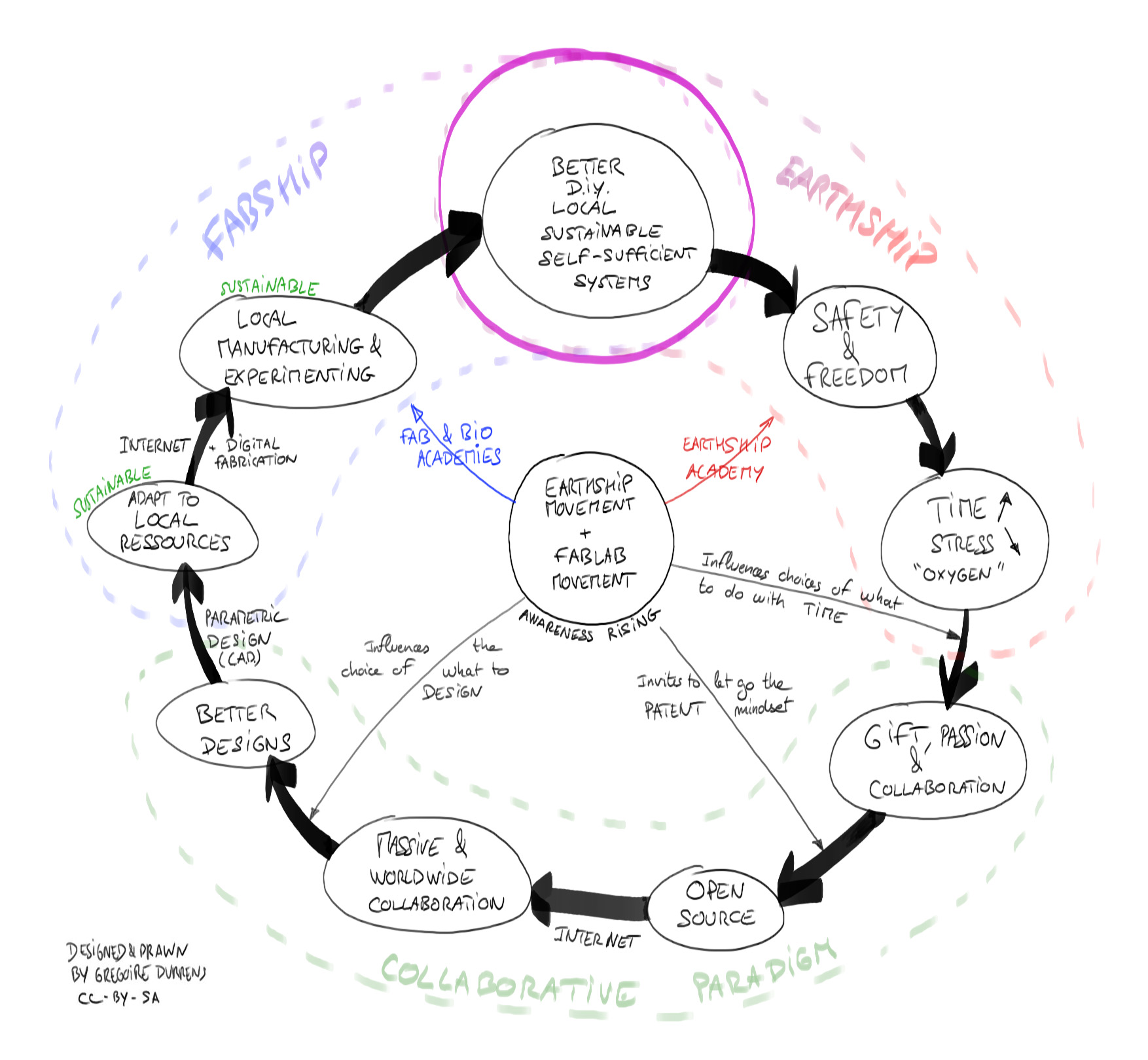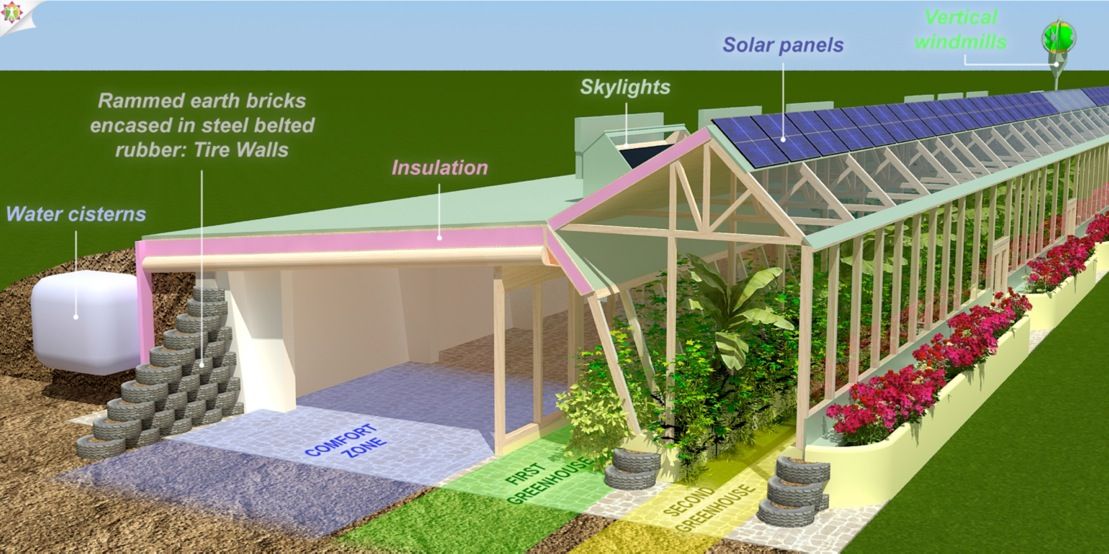Wk19. Invention & Intellectual Property
Develop a plan for dissemination of your final project prepare a summary slide (presentation.png, 1280x1024) and video clip (presentation.mp4, 1080p HTML5, < ~minute, < ~10 MB) in your root directory.
The process of Invention
Without knowing it, for me this project has really followed the Ready, Fire, Aim process of discovery that Neil mentions in his class. Not having any formal background in engineering or electronics, this has been a steep learning curve but driven by a determination to learn how to harness, generate and fabricate renewable energy.
Fabships: an off-grid ecosystem
One of the ultimate goals of this project is that it helps to grow interest and support to build the very first Fabship prototype in Taos, New Mexico. A Fabship is a fully autonomous, off-grid Fablab housed within a bio-climatic and self-sufficient building called Earthship.

Fabships are essentially about people, power and community. It is about expanding the reach of How to make (Almost) Anything to power a fully off-grid makerspace; and creating a tangible methods and practices for energy efficient manufacturing.
The goal is to bring together two complementary movements, networks and philosophies. On the one hand expanding the reach of FabLabs and digital fabrication to offgrid networks and remote communities. On the other, teaching How to Build (Almost) Anywhere using intelligent, tried-and-tested Earthship design and systems.
Building a FabLab in an Earthship is more than a marriage of convenience or a technical challenge. It embodies the cross-fertilization of communities in the spirit of open-source learning and innovation. Both movements in their parallel ways have been inspiring people to reclaim creative agency, build more intelligently, and rethink what we produce, how we consume and what, where, why we waste. Bringing them together under one roof is a creative synergy waiting to happen.

An Open Source Project
My final project has been developed entirely with an open source model in mind. This site and my project is sharable, modifiable and useable under MIT Open Source Licensing. This means that this project, design files and software is available to copy, redistribute, adapt, remix, and build upon for any purpose, even commercially. The only condition is this license and copyright notice be included copies or substantial uses of the work.
The main reason for using the MIT licence is that it is a totally permissive software license that allows users to do whatever you want. It also makes clear that the work is provided “as is” so that the author cannot be held liable.
Open Knowledge
One of the goals of Fabship is to actively disseminate designs, methods and practices to fabricate the essential systems, useful items, and simple components necessary for off-grid living and survival. Inspiring people to create and share knowledge, experience and solutions is key to this.
This project demonstrates that we can generate non-trivial amounts of power using the tools found in a Fablab, and it seeks to inspire others to do the same. To this end, I have documented my progress and investigation to the best of my (layman) abilities, and shared my designs and source code where relevant.
Learning to harvest our own energy, consume according to our needs and live in abundance with nature embodies a change I want to see in the world.
Autonomous Living
Earthship Biotecture has long been refining, inspiring and evolving the possibilities of autonomous living. What does this mean?
Earthships are fully integrated living systems that sustain our basic human needs. Homes that are designed to include thermo-solar heating and cooling, solar and wind electricity, self-contained sewage treatment, building with natural and recycled materials, water harvesting and storage, and food production. Homes that are not slave to property markets, centralised utilities, and the wasteful economy.

On both the individual and community level, living autonomously frees us from the inefficiencies and dependencies centralised control and utility systems. While living in an Earthship does not compromise any of the comforts of a conventional home, it does change the way we think about what we consume and how we relate to the natural environment around us. With this freedom also comes the space, time, and energy to focus on the work, collaboration and play worth living for.
FabEconomy and Market
Off grid and autonomous Fabships can provide a fertile ground for distributed networks of sustainable manufacturing, production and local economies. Competing in a highly unbalanced market selling commercial wind turbines does not make much sense to me. Furthermore, I have explained in my Final Project Concept why, due to low efficiency and capacity, small wind turbines are not commercially available.
What does make sense is freely distributing this technology and knowhow (together with other/complementary renewable systems) to off-grid networks and communities, empowering them to create their own on-site generation or distributed energy supply. In these communities, necessity remains the mother of all invention and reliability, adaptability and low maintenance often comes before efficiency. Furthermore, there are simply many more applications which can be found for small scale turbines and generators. Also through an active distributed energy network one can work on making systems more efficient for more specific applications.
A Fabmarket that can certify products being built using fully renewable energy, methods and practices will bring added value in a world which is beginning to take seriously the urgent need to find more sustainable forms of production.